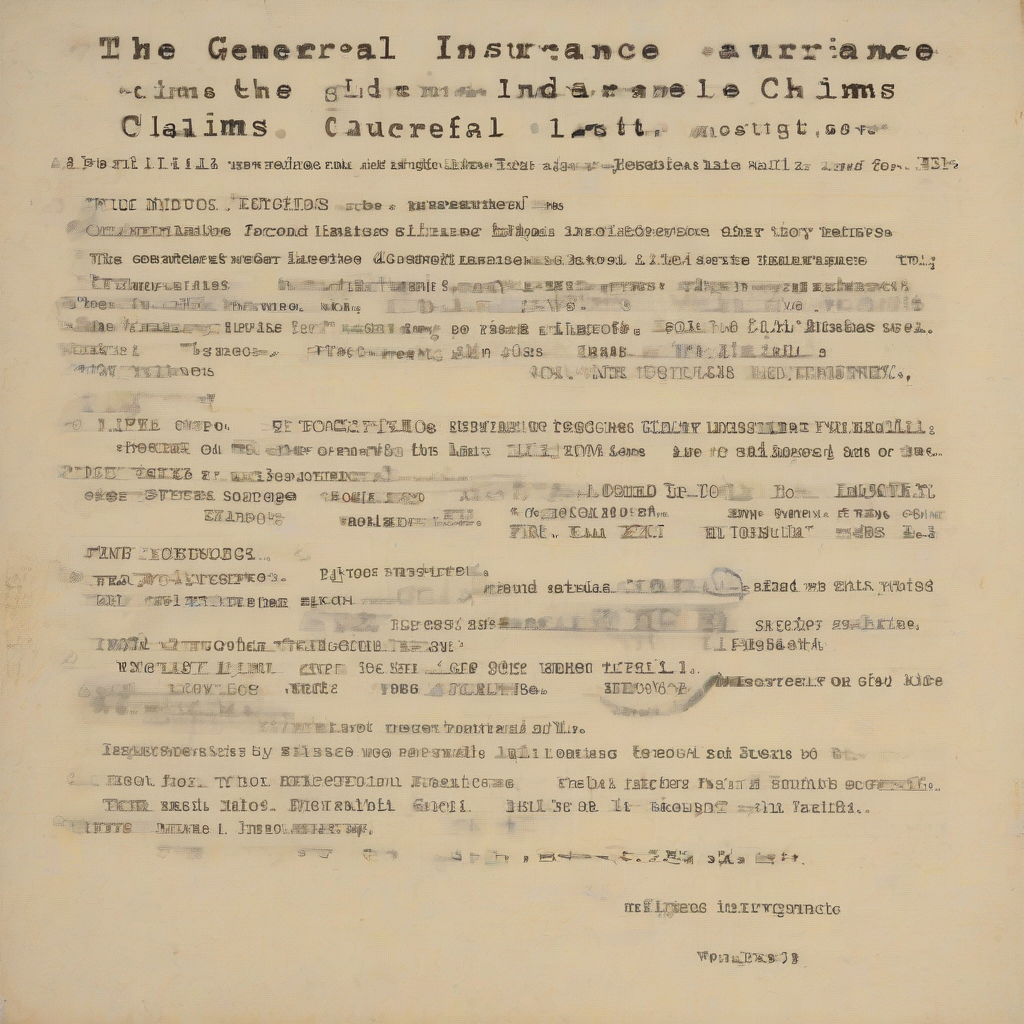Navigating the Labyrinth: A Comprehensive Guide to General Insurance Claims
Filing a general insurance claim can feel like navigating a complex maze. This guide aims to illuminate the process, providing a clear understanding of each stage, from initial notification to final settlement. Whether you’re dealing with a car accident, a home burglary, or a medical emergency, understanding the intricacies of insurance claims can significantly impact your experience and outcome.
Understanding Your Policy
Before even considering a claim, thoroughly review your insurance policy. This seemingly mundane task is crucial. Familiarize yourself with:
- Covered perils: What events or incidents are covered under your policy? Knowing this upfront prevents disappointment later. Specific examples include fire damage, theft, accidental injury, or liability for accidents.
- Exclusions: What situations or events are explicitly excluded from coverage? Policies often exclude events like wear and tear, intentional damage, or pre-existing conditions.
- Policy limits: What is the maximum amount your insurer will pay for a covered claim? Understanding your policy limits helps manage expectations and prevents over-reliance on insurance.
- Deductibles: What amount are you responsible for paying before the insurer covers the remaining costs? This is a crucial element affecting your out-of-pocket expenses.
- Claim procedures: The policy outlines the specific steps you need to take when filing a claim. Understanding this process streamlines the entire procedure.
The Claim Process: A Step-by-Step Guide
The claim process typically involves several key steps:
- Immediate Actions: Depending on the nature of the incident, immediate actions might be required. This could include contacting emergency services, securing the scene (if safe to do so), or documenting the damage.
- Notification to Insurer: Promptly notify your insurer about the incident. Most policies have specific timeframes within which you must report the claim. Delaying notification could jeopardize your claim.
- Gathering Evidence: Collect all necessary evidence to support your claim. This might include photographs, police reports, witness statements, medical records, repair estimates, and receipts.
- Filing the Claim Form: Complete and submit the claim form provided by your insurer. Accuracy is paramount; provide complete and truthful information.
- Insurer Investigation: The insurer will investigate your claim. This may involve reviewing the evidence you provided, conducting their own investigation, and potentially contacting witnesses.
- Claim Assessment: The insurer will assess your claim based on the evidence and policy terms. This assessment determines the extent of coverage and the amount payable.
- Settlement Offer: The insurer will make a settlement offer based on their assessment. Review the offer carefully and negotiate if necessary.
- Claim Payment: Once you accept the settlement offer, the insurer will process the payment. Payment methods vary depending on the insurer and the nature of the claim.
Common Types of General Insurance Claims
General insurance covers a wide range of risks. Understanding the specifics of common claim types can prepare you for the process:
- Motor Vehicle Claims: These claims arise from accidents involving cars, motorcycles, or other vehicles. Evidence usually includes police reports, witness statements, repair estimates, and photographs of the damage.
- Home Insurance Claims: These cover damage to your home or its contents due to events like fire, theft, vandalism, or natural disasters. Evidence could include photographs of the damage, police reports (in cases of theft or vandalism), and repair estimates.
- Travel Insurance Claims: These cover unexpected events during travel, such as medical emergencies, trip cancellations, lost luggage, or personal accidents. Supporting documentation usually includes medical bills, flight cancellation confirmations, and police reports (if applicable).
- Liability Claims: These cover situations where you are legally liable for causing injury or damage to someone else. This often involves legal representation and requires thorough documentation of the incident and its consequences.
- Health Insurance Claims: These cover medical expenses, hospital stays, and other related costs. Supporting documentation includes medical bills, prescriptions, and doctor’s reports.
Tips for a Smooth Claim Process
Following these tips can significantly improve your chances of a successful and hassle-free claim:
- Act promptly: Notify your insurer as soon as possible after the incident.
- Document everything: Keep detailed records of all communication, evidence, and expenses related to the claim.
- Be honest and accurate: Provide truthful information in all your communications with the insurer.
- Cooperate fully: Respond promptly to the insurer’s requests for information and cooperate with their investigation.
- Keep copies of all documents: Maintain copies of all correspondence, forms, and supporting documentation.
- Understand your policy: Thoroughly review your policy to understand its coverage, exclusions, and procedures.
- Seek professional help if needed: Consider consulting a lawyer or other professional if you encounter difficulties with your claim.
- Keep calm and be patient: The claims process can take time. Maintain patience and professionalism throughout the process.
Dealing with Claim Disputes
Despite your best efforts, disagreements with your insurer can arise. If you’re unhappy with the insurer’s decision, consider these options:
- Internal Review: Most insurers offer an internal review process, allowing you to appeal the initial decision.
- External Dispute Resolution: If the internal review is unsuccessful, consider seeking help from an external dispute resolution service.
- Legal Action: As a last resort, you may need to consider legal action to resolve the dispute.
Conclusion (Omitted as per instructions)

